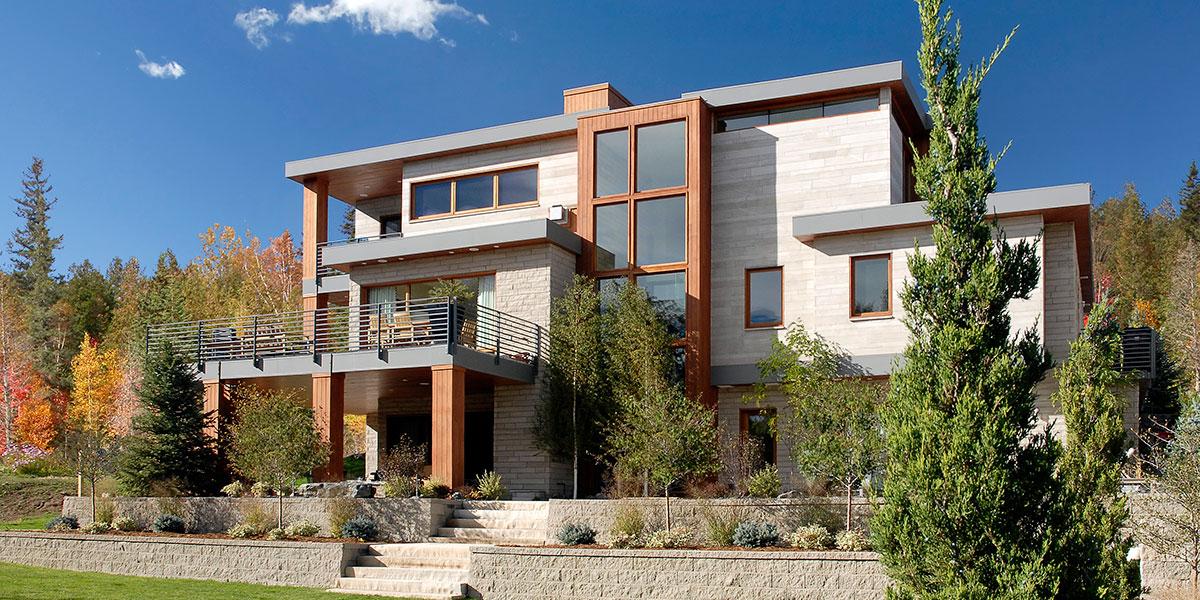Blog

The Ultimate Guide to Building Custom Homes
Introduction
Building a custom home is a dream for many people. Unlike pre-built homes, custom homes are designed and constructed according to your unique preferences and requirements. This guide will walk you through the entire process, from initial planning to moving in, ensuring your custom home journey is smooth and rewarding.
What is a Custom Home?
A custom home is a one-of-a-kind house that is designed specifically for you, reflecting your style, needs, and lifestyle. Unlike production homes, which are built in large quantities with similar designs, custom homes offer complete flexibility in terms of design, materials, and features.
Benefits of Building a Custom Home
Building a custom home comes with numerous advantages:
Personalization: Tailor every aspect of your home to fit your tastes and needs.
Quality: Use high-quality materials and finishes.
Location: Choose your ideal location without compromise.
Future-Proofing: Incorporate the latest technologies and sustainable practices.
Planning Your Custom Home
Defining Your Vision
The first step in building a custom home is defining your vision. What kind of home do you want? Consider your lifestyle, family needs, and future plans. Visualize your dream home and list out the must-have features.
Setting a Budget
Establishing a realistic budget is crucial. Consider all costs, including land, construction, permits, and finishes. Consult with financial advisors to understand your financing options and secure the necessary funds.
Finding the Right Location
Location is key. Research different neighborhoods, consider proximity to work, schools, and amenities. Ensure the land you choose meets your requirements and fits within your budget.
Designing Your Custom Home
Hiring an Architect
An experienced architect can bring your vision to life. Look for architects with a portfolio of custom homes and good client reviews. Discuss your ideas and work together to create a design that meets your needs.
Creating a Design Plan
Develop a comprehensive design plan that includes floor plans, elevations, and detailed specifications. Consider the flow of spaces, natural light, and how each area will be used.
Choosing a Floor Plan
Select a floor plan that suits your lifestyle. Open floor plans are popular for their spacious feel, while more segmented layouts offer privacy. Customize the plan to fit your specific needs.
Selecting Materials and Finishes
Sustainable Building Materials
Opt for sustainable materials that are eco-friendly and durable. Bamboo flooring, recycled steel, and reclaimed wood are great options. Sustainable choices can reduce your environmental footprint and enhance your home's value.
High-Quality Finishes
Choose high-quality finishes that reflect your style. Invest in durable countertops, cabinetry, and flooring. High-quality finishes add elegance and longevity to your home.
Custom Features and Upgrades
Incorporate custom features that make your home unique. Consider built-in shelves, custom lighting, and unique architectural elements. These touches personalize your space and add value.
Choosing the Right Builder
Researching Builders
Find a reputable builder with experience in custom homes. Look for builders with strong portfolios and positive client feedback. Ask for recommendations from friends and family.
Asking the Right Questions
Interview potential builders thoroughly. Ask about their experience, timelines, cost estimates, and any concerns you might have. A good builder will communicate clearly and address your questions satisfactorily.
Checking References and Reviews
Request references from previous clients and follow up with them. Read online reviews and check ratings on trusted sites. Ensure your builder has a solid reputation for quality and reliability.
The Construction Process
Breaking Ground
Once your design is finalized and permits are secured, construction begins with breaking ground. This stage involves site preparation, foundation work, and laying the groundwork for your custom home.
Managing Construction Phases
Construction progresses in phases: framing, roofing, plumbing, electrical, and finishing. Stay involved by visiting the site regularly, reviewing progress, and addressing any issues promptly.
Keeping on Schedule and Budget
Maintaining your project on schedule and within budget requires constant monitoring. Communicate frequently with your builder, anticipate potential delays, and have contingency plans in place.
Custom Home Interiors
Designing Your Dream Kitchen
The kitchen is the heart of the home. Design a functional and stylish kitchen with ample storage, high-end appliances, and a layout that suits your cooking style.
Creating a Cozy Living Space
Your living area should be inviting and comfortable. Consider your furniture placement, lighting, and décor to create a space where your family can relax and entertain guests.
Building Luxury Bedrooms and Bathrooms
Design luxurious bedrooms with ample space and storage. Create spa-like bathrooms with high-quality fixtures, soaking tubs, and elegant finishes.
Outdoor Living Spaces
Designing a Custom Patio
Extend your living space outdoors with a custom patio. Include features like outdoor kitchens, fire pits, and comfortable seating to create a perfect space for relaxation and entertaining.
Landscaping for Custom Homes
Professional landscaping enhances your home's curb appeal and functionality. Choose plants and designs that complement your home and require minimal maintenance.
Adding Outdoor Amenities
Consider adding outdoor amenities like a pool, garden, or play area. These features increase your home's value and provide additional leisure options.
Energy Efficiency and Sustainability
Installing Solar Panels
Reduce your energy costs and environmental impact by installing solar panels. They are a long-term investment that pays off through energy savings and potential tax incentives.
Energy-Efficient Appliances
Choose energy-efficient appliances to reduce your home's energy consumption. Look for ENERGY STAR-rated products for optimal performance and savings.
Eco-Friendly Landscaping
Incorporate eco-friendly landscaping practices such as xeriscaping, rain gardens, and native plants. These methods conserve water and promote a healthy ecosystem.
Smart Home Technology
Home Automation Systems
Integrate home automation systems for convenience and efficiency. Control lighting, climate, security, and entertainment systems with smart devices.
Security Features
Enhance your home's security with smart locks, cameras, and alarm systems. Remote monitoring and alerts provide peace of mind whether you're home or away.
Integrating Smart Devices
Create a seamless smart home experience by integrating compatible devices. Voice-controlled assistants, smart thermostats, and automated lighting can simplify your daily routines.
Financing Your Custom Home
Understanding Your Financing Options
Explore various financing options, including construction loans, traditional mortgages, and home equity loans. Each option has its benefits and considerations.
Securing a Construction Loan
Construction loans provide the necessary funds to build your home. Work with lenders experienced in custom home financing to secure favorable terms.
Managing Expenses
Keep track of all expenses and adjust your budget as needed. Allocate funds for unexpected costs and ensure you stay within your financial limits.
Legal and Regulatory Considerations
Understanding Building Codes
Familiarize yourself with local building codes and regulations. Compliance ensures your home is safe and meets all legal requirements.
Securing Permits
Obtain the necessary permits before starting construction. This process involves submitting plans and undergoing inspections to ensure compliance with local regulations.
Navigating Zoning Laws
Understand zoning laws that affect your property. These laws dictate how land can be used and may impact your design and construction plans.
Common Challenges and Solutions
Managing Delays
Construction delays are common. Stay flexible, communicate with your builder, and have contingency plans to manage unexpected issues.
Dealing with Cost Overruns
Monitor your budget closely to avoid cost overruns. Regularly review expenses and make adjustments to stay within your financial limits.
Ensuring Quality Control
Maintain high standards by conducting regular inspections and addressing any quality issues immediately. Your builder should be responsive to your concerns and committed to quality workmanship.
Moving into Your Custom Home
Final Inspections
Before moving in, conduct final inspections to ensure everything meets your expectations. Address any remaining issues before taking possession of your new home.
Moving Day Tips
Plan your move carefully to minimize stress. Hire professional movers, pack efficiently, and ensure all utilities are set up before moving day.
Settling In
Take your time to settle into your new home. Unpack gradually, personalize your space, and get to know your new neighborhood.
Maintaining Your Custom Home
Regular Maintenance Tips
Perform regular maintenance to keep your home in top condition. Check HVAC systems, plumbing, and electrical systems periodically.
Seasonal Upkeep
Adjust your maintenance routine according to the seasons. Prepare your home for winter and summer by checking insulation, cleaning gutters, and maintaining landscaping.
Long-Term Care
Invest in long-term care for your home. Schedule professional inspections, update systems as needed, and stay proactive with repairs and improvements.
Conclusion
Building a custom home is an exciting journey that allows you to create a space tailored to your lifestyle and preferences. By following this guide, you'll be well-prepared to navigate the process and enjoy the many benefits of your dream home.
FAQs
What is the average cost of building a custom home? The cost varies widely depending on location, size, materials, and finishes. On average, it can range from $200,000 to over $1 million.
How long does it take to build a custom home? Typically, it takes 8 to 24 months to build a custom home, depending on the complexity of the design and construction process.
Can I make changes to the design during construction? Yes, but changes can increase costs and delay the project. It's best to finalize your design before construction begins.
What are the most important features to include in a custom home? Key features include a functional layout, high-quality materials, energy efficiency, and personalized design elements that reflect your lifestyle.
How do I choose the right builder for my custom home? Research builders, check their references and reviews, and ask detailed questions about their experience, process, and communication style.
Testimonials

John Doe
Finance Manager
Lorem ipsum dolor sit amet, consectetuer adipiscing elit. Aenean commodo ligula eget dolor. Aenean massa. Cum sociis natoque penatibus et magnis dis parturient montes, nascetur ridiculus mus.

John Doe
Finance Manager
Lorem ipsum dolor sit amet, consectetuer adipiscing elit. Aenean commodo ligula eget dolor. Aenean massa. Cum sociis natoque penatibus et magnis dis parturient montes, nascetur ridiculus mus.

John Doe
Finance Manager
Lorem ipsum dolor sit amet, consectetuer adipiscing elit. Aenean commodo ligula eget dolor. Aenean massa. Cum sociis natoque penatibus et magnis dis parturient montes, nascetur ridiculus mus.

